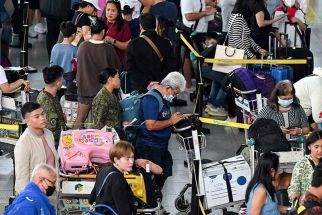Lessons from 'Sendong'
MANILA, Philippines - It was a reverse tsunami. And it happened, all too literally, in the dead of night. The torrent of silt, floodwaters and countless logs hurtling down from the denuded mountains of Bukidnon and Lanao swept everything in its deathly path. Entire communities, not only of homes and schools but incalculable repositories of culture and human memories, were gone in a mad instance of Nature, washed to the vast bays of Macajalar and Iligan.
This is my home region, and as we Mindanaoans would claim, of settler or indigenous origin, we are all lumad – born and grown to the place. I am a son of Bukidnon, from the Lumad tribal reference to “people of the mountains.”
We are children of the great outdoors, where the sky is endless and forested mountain ranges stretch to far horizons, feeding river basins and farmlands with their copious watersheds. And within any driving distance are the seas of Mindanao, all part of the greater Coral Triangle, with the richest marine biodiversity on the planet.
In the 1970s and even up to the mid-1980s, we remember fog-draped mornings and early afternoon showers, predictable cycles and seasons owing to thick rainforests that carpeted our rugged, mountainous terrain.
Mindanao is not called the “land of promise” for nothing. We boast of being typhoon-free and of fertile land, a place of the possible for Settler or Lumad, for Christian or Moslem.
The realities on ground, however, reveal a protracted, different narrative in the midst of natural wealth and beauty: conflict, war, poverty, and, as the events of the last week have shown, increasing environmental damage.
In the wake of Sendong we joined the President in surveying the typhoon’s long trail of death and destruction. On a military chopper, from an aerial vantage, the land below looked quite tranquil, the sun had returned and up to the distant hills and plateaus was an endless spread of green.
But jarring this otherwise pleasant tableau were red-brown grids of degraded hillsides and heavy silt that turn riverbeds into eerie mud flats. Further upstream one is witness to the continuing rape of primary-growth forests, in stiff defiance of a logging ban in the country.
From on air to the cramped evacuation centers, the Mindanaoan in me wept. Where the rivers swelled their banks, one could only see upturned vehicles, flattened houses, and heaps of debris. Funeral parlors were reported to have run out of formalin and a rising body count meant human remains could not be accommodated for the affirming rituals of wakes and burials.
We reap what we sow, as it is said, and if the thousands of logs flushed from the denuded uplands that had lined the Iligan coast is anything to go by, then we are now, surely, paying the high price of our folly.
Three years ago a few of us who convened the Philippine Imperative on Climate Change came up with a simulation showing coastal areas in the country, where flooding risks and climate change impacts are high. We had shown that Cagayan de Oro and Iligan, among 25 other “vulnerable climate hotspots” around the archipelago, were prone to storm surges and flooding. While some local officials and sectors were receptive, others called us “alarmists.”
Yet as we track the swaths of fury of typhoons “Ondoy,” “Peping,” “Peding,” “Reming,” “Quiel,” and now Sendong – all in just a matter of a few years – we see that in a warming world and climactic disturbances, such storms are becoming more frequent, more fierce, more destructive.
Ang mga sakunang dadalas, lalakas, at titindi (Calamities will be more frequent, stronger and more intense). No small wonder that the latest risk assessments rank the Philippines one of the five most vulnerable to climate change impacts in the world.
We can readily cost the damage to infrastructure, property, commerce and agriculture, but disasters of this magnitude often mask the deeper and lasting psychological trauma of victims and families – or, in this case, as the United Nations would call them, “climate refugees.” Displacement is not only physical, and when one loses loved ones under these deadly circumstances, bereavement can be profoundly dislocating.
A mother in Iligan who lost her three small children to the onslaught can only wail, “I should have been the one who died.” A young adult who scoured funeral parlors all over Cagayan de Oro in search of her mother, only to collapse in sheer grief and outrage when she found her among an array of corpse bags by a landfill. If a local government’s response to mounting numbers of corpses is to take them to a solid waste site, then one has to ask how much of our social fabric has frayed.
Disasters offer us the chance to return to our common humanity, as they offer us the opportunity yet again to return to our indivisible ecology.
The author is Presidential Adviser on Environmental Protection and concurrent head of the Laguna Lake Development Authority. As congressman for three terms, he principally authored the Clean Air, Clean Water Act and the Solid Waste Management Act.
- Latest
- Trending


































